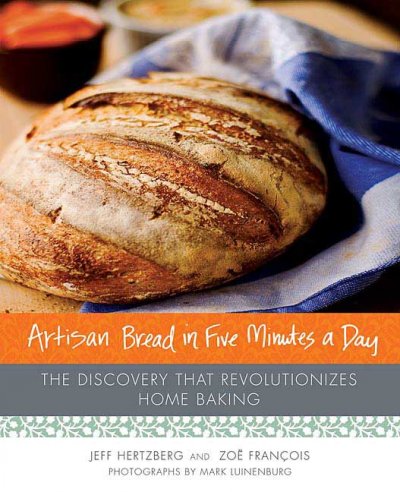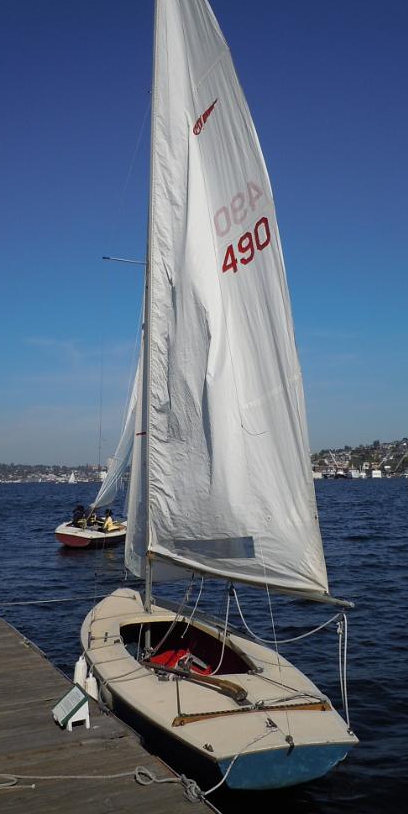
Wife came back from a friend’s with this “super easy delicious bread recipe” that was from a Chinese blog. It was a fan blog for the book “Artisan Bread in Five Minutes a Day” It was a “no knead” recipe.
The day came that we had sufficient spontaneity to bake a bread. Flour, salt, yeast, water were all the recipe called for. (My contribution really did not justify the use of this plural pronoun, but I am the one who’s writing this.) We mixed ingredients together in a container, left it alone on the counter, and went for a long walk. We came back, baked it per instruction. And looked at each other approvingly. They were delicious! Crispy crust, nice and soft crumb, lots of aroma, and excellent bread flavors that we expect from quality bakeries. Success! Naturally, I got obsessed and checked out several books on the topic of bread making.

Bread making, an ancient art, is simple that anyone can do it well. Yet, it will take decades of practice and study to achieve excellence at commercial scale. Peter Reinhart‘s book — “Bread Baker’s Apprentice” — demystified this craft, revealed its science, and taught me how to appreciate a piece of good bread. He offered few gems of wisdom for home bakers.
- Try to use weight, instead of volume, for ingredients, including water. You can scale the recipe up or down as long as you keep those ratios the same. To convert, use the table below as general guidelines.
Ingredient Weight per volume Flour 4.5 oz Cup Water 8 oz Cup Table Salt .25 oz Teaspoon Sea Salt .167 oz Teaspoon Kosher Salt .143 oz Teaspoon Yeast .11 oz Teaspoon - Salt retards, or even kills, yeasts. Don’t put them in direct contact with each others. You may increase or reduce salt for taste, but also allow long/shorter time for fermentation.
- Once risen, handle the dough very gently. Those air bubbles that were trapped inside the dough are good stuff. Disturb them minimally.
- To form the bread, try to create some tension on the surface with some stretching. Leave the loaves alone for secondary fermentation for another 10% or so in volume.
- Don’t forget to score the loaves. It enhances the look and also the taste.
- Bake with a stone or cast iron to preserve the heat in the oven. Put loaves directly on it. Preheat oven 10 degrees higher, then reduce it down to normal once the dough has gone in and steam introduced, since both will reduce the oven temperature.
- It is important to introduce steam during the first few minutes of baking. The easiest way is to preheat the oven with a baking pan and pour hot water into it when the loaves go into the oven. The initial steam relaxes the surface of the loaves to enhance “oven spring.” After the crust has formed, moisture serves no purposes anymore. Spraying water on top of the dough is a bad idea.
We are, somehow, attracted to the “rustic” category of the bread that has high hydration ratio.
The “formula” (bread people don’t say “recipe”) is a 80-4-2 one. This means, by weight, water is 80% of flour, salt 4%, and yeast 2%. It is extremely simple.
| Time required: | 5 hours. But “active” time is probably less than 30 minutes. | |
| For 4 loaves: | ||
| Flour, all-purposes, unbleached preferred | 15 oz | 3.25 cups |
| Table Salt | 0.56 oz (4%) | 2.25 tsp |
| Yeast | 0.25 oz (2%) | 2.25 tsp |
| Water | 12 oz (80%) | 1.5 cups, warm to touch |
When we made this bread, we use ⅔ of salt and mixed half of room temperature water with the other half boiling. The result was quite good.
Mix flour, yeast, salt in a bowl well. Add water and mix them all up. Leave it at room temperature, slightly covered, for 2 hours or when it double in size. Then put into the refrigerator for another 3. (That’s called retardation. Cooler temperature slows down the leavening.)
Flour the surface and hands. Take out the dough gently. Divide them into 4 with a knife (don’t pull them apart). Form each into roughly olive shape. If you wish, pull and tuck from all sides to create some tension on the surface. If desirable, lightly sprinkle the top with flour or rolled oats.
You can take out only as much dough as you need and leave the rest in the refrigerator as “seed” or “starter” for future uses. Put the unused portion in the refrigerator in an air-tight container and open it once a day to let out the air produced by the yeast. When you are using it, mix them with fresh ingredients (per proportion) and repeat the fermentation process as above.
Sprinkle cornmeal or flour on a piece of parchment paper and put them on. Preheat the oven to 450°F with the stone on middle rack and a baking pan underneath. Leave dough at room temperature for about an hour, or until the dough has risen up about 10% more in volume.
Score the dough. Slide them on top of the stone. Pour a cup of hot water onto the baking pan (protect your hands from the steam). Close the oven quickly to trap in the steam. Bake for 25 minutes or until golden brown. (Rotating the bread 180 degrees at about 10 minutes is generally a good idea.)
Take them out and wait for the bread to cool. The bread tastes less delicious before the center cool down to about 80F. That takes about half an hour.









